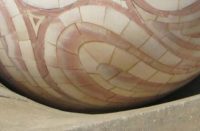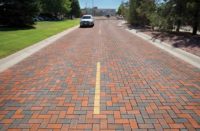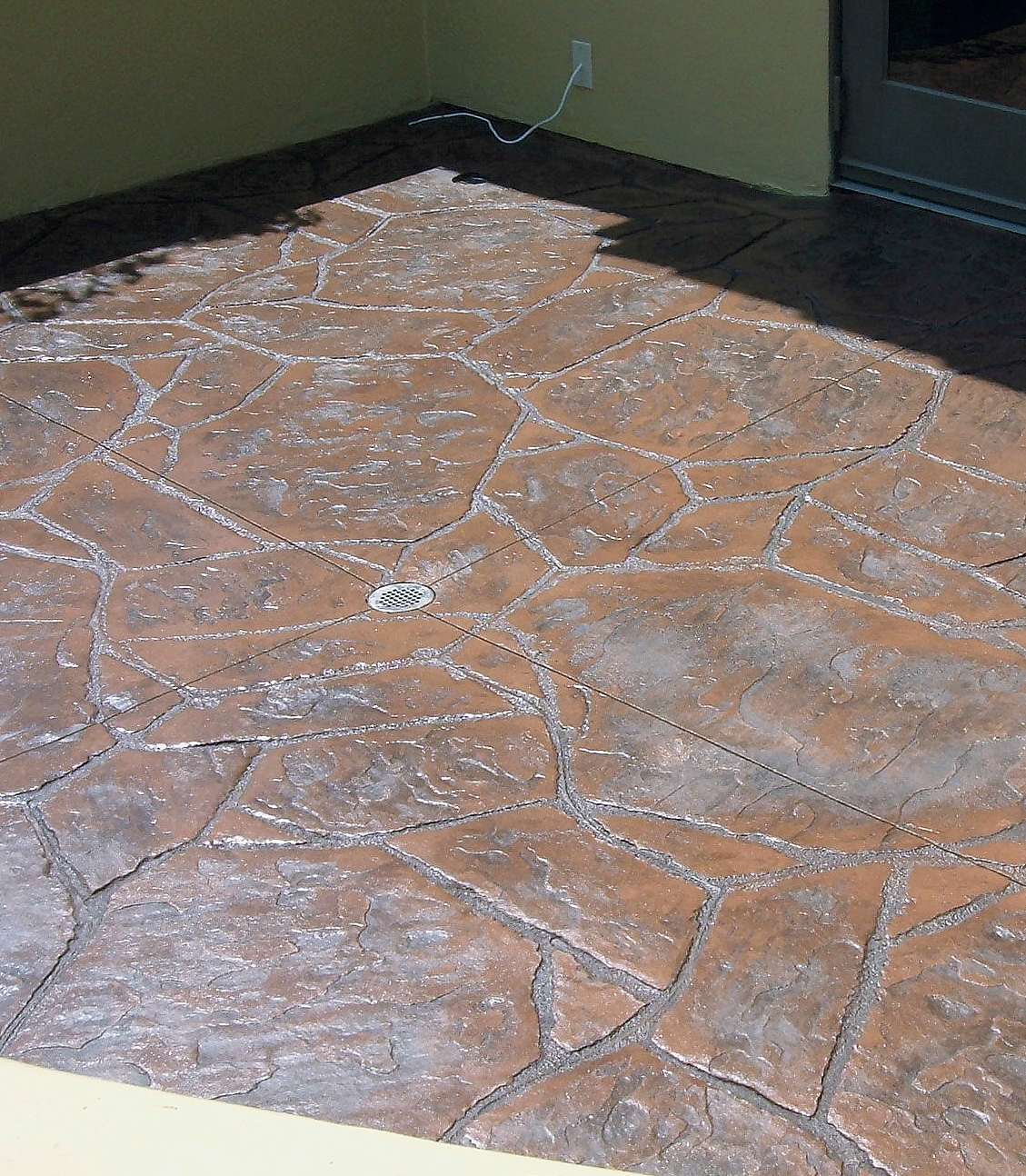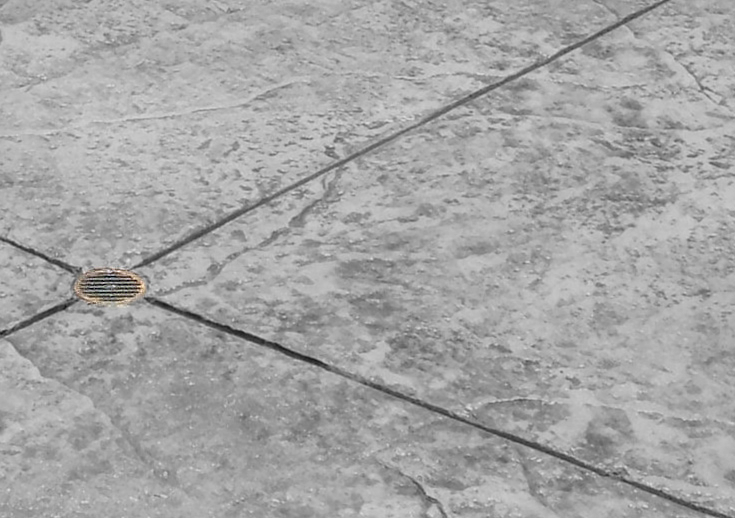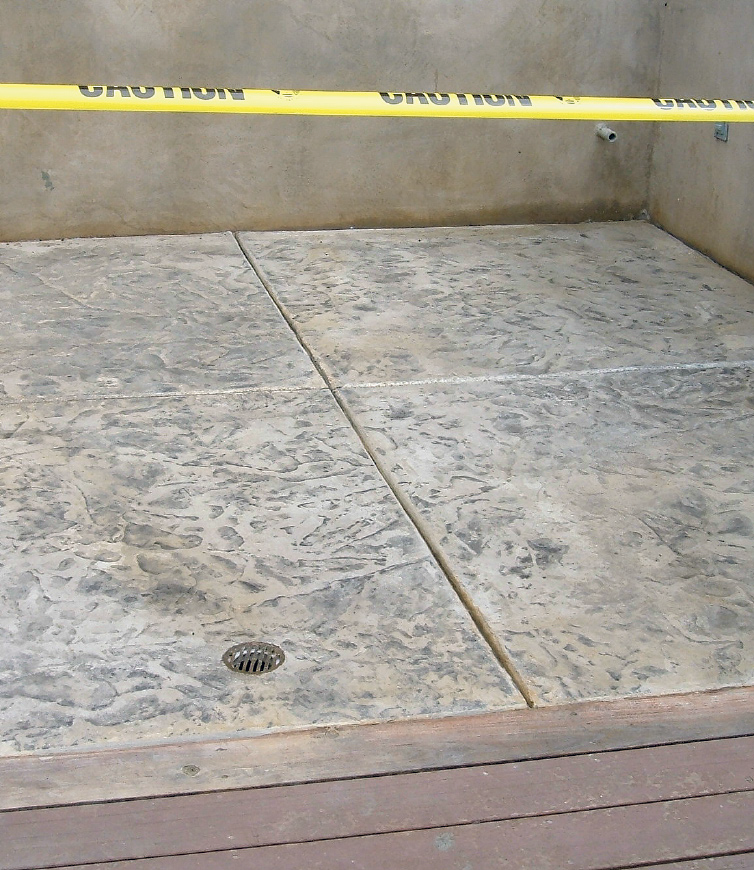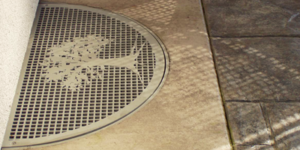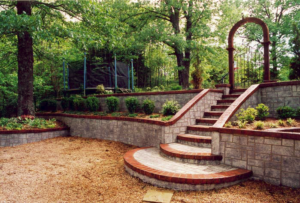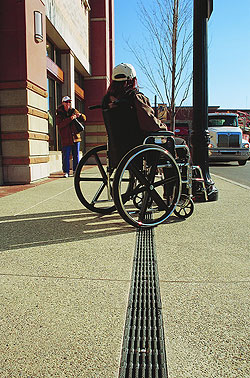
On a run-of-the-mill pour, installing drainage systems is no big deal. But on a decorative concrete project, a drainage system can ruin the effect the designer is trying to create.
There are two basic types of drains: trench or channel drains that collect water at one end of a slope, and catch basin or area drains that drain the water from the middle of a slab. Each can be a bear for decorative contractors. Option one includes installing a long, unsightly grate. Option two requires contractors to trowel multiple four-way grades into what probably needs to be a relatively flat surface.
Drainage systems can blend into decorative concrete applications. But making them so requires some forethought.
The case for area drains
Trench and channel drains are usually used between a sloping driveway and a garage entrance, along a straight retaining wall, or to control storm runoff and chemical spills. Channel drains usually have a flat bottom with no built-in slope or pitch. Trench drains have slope or pitch built in, plus a rounded bottom to prevent debris from accumulating.
But just as these drains draw water off the slab, they draw the eye away from designs on the slab. Doug Carlton of Doug Carlton Concrete in Visalia, Calif., knows — he struggled with incorporating a trench drain into a project just recently. “It really will stand out,” he says. “So many of these strip or channel drains, they just say ‘industrial.’ That’s not what we’re trying to do.”
Carlton prefers to use area drains whenever he can. These drains collect liquid in the centers of gently recessed areas of concrete. An area drain, or “point drain,” is set up much like a shower drain, with a small grate in the center and a single drain pipe that leads water away. A catch basin is a receptacle with outlet ports set into the ground at the base of the basin and pipes attached to the ports.
Area drains can offer a natural, organic look, especially when compared to the alternatives, Carlton says. “When you look down at the job, you see nothing but decorative concrete with a small circle in the middle of it all.”
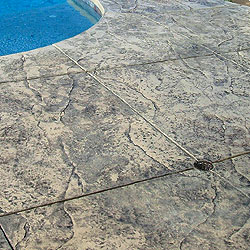
Carlton’s crews use area drains “religiously,” he says, 200 or 300 a year. But he acknowledges that the weather where he works may feed his zeal. His part of the country gets only about a foot of rain per year, he says, so there is not much water to drain.
Installation can be a chore too, says Lesley Pickering, marketing manager for ACO Polymer Products Inc. “Grading of finished pavement with trench drainage systems is a simple fall towards the drain. Point drains require more extensive excavation and underground pipe-work. And pavement grading can be difficult, as each point drain requires a four-way fall to ensure an effective end result.”
A grate alternative
When choosing a type of drain, George Lacker, owner of GLC3 Concrete in Plantation, Fla., keeps in mind that the surrounding concrete has to be sloped to that drain. That’s one big advantage trench drains have over area drains, he says. “Sloping to them is pretty easy. You’ve got a whole long drain to slope to.”
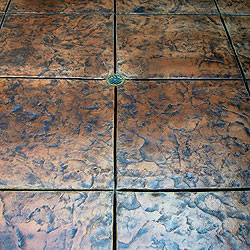
Once a channel or trench drain is installed, the grate is the only part visible, so it becomes the key to working the drain into the decorative scheme. “There are a wide variety of grates available that can blend into the paving materials for a discreet look, that can be chosen to complement the surrounding landscape structures, or that can be chosen to contrast against paving for design or safety reasons,” Pickering says.
Probably the easiest way to make a drain cover blend in is to use color. If the drain cover is plastic, this one is easy: Plastic comes in colors. A metal grate needs to be coated with color. Powder coating is expensive, but aerosol sprayers can be used to paint a drain or manhole the color of surrounding tinted concrete.
When a contractor weighs metal against plastic, all the other factors involved in choosing a grate come into play as well. Load rating is critical — a grate used in a walkway or driveway may require only a “light traffic rating,” while vehicular traffic warrants using grates with a heavier rating. Hydraulic performance, space limitations and sloping issues will also drive the selection of a drain type. “If the material and loading requirement of the grate are specified correctly to suit the application, there should not be a significant difference in longevity of use between plastic and metal,” Pickering says.
Durability is important. “Plastic offers excellent durability and economics,” Pickering says. “It does not oxidize and can be made with UV inhibitors to minimize fading. However it is usually used for light-duty applications such as residential jobs or areas with low pedestrian traffic.”
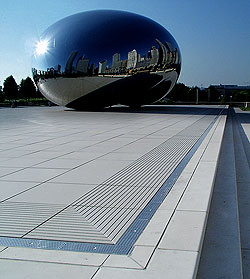
An area with a lot of vehicular traffic usually calls for a metal grate that will take the pressure, Lacker says. “Pool areas, I think, are fine with plastic stuff.”
Pedestrian areas often require ADA-compliant grates with narrow slots that are perpendicular to the flow of traffic, Pickering says. “Common practice is to place the drain outside the main flow of traffic where possible.”
Finally, trench and grate materials must be resistant to the liquids or chemicals being drained. “Contact with chemicals from pools or landscape fertilizers will affect the aesthetics of the grate and reduce its performance life, and a suitable material should be chosen to avoid or reduce this damage,” Pickering says.
Metal grates can be made from galvanized steel, stainless steel, iron or brass. Because of this, and because of the wide range of material and load class ratings, metal grates vary widely in cost.
Finally, a creative contractor can simply disguise a drain, Lacker says. “Make the grate look like rocks with something holding them together. The trick is how to keep it together in the sun. Epoxy doesn’t hold up.”
